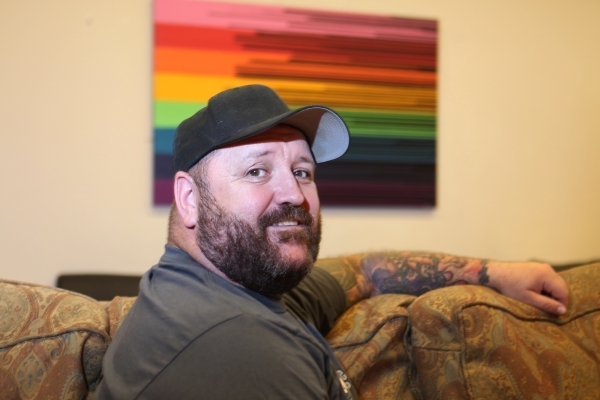Living longer with chronic diseases


When Joshua Montgomery was diagnosed with HIV 18 years ago, he didn’t take the news as a death sentence, but rather as a wake-up call that ultimately brought the former drug addict healthier days.

“Nowadays, with science and everything, you can live up to 60 and 70 and even longer,” he said. “You can still be the person you’ve always wanted to be.”
Montgomery, 46, represents a growing segment of the population in Clark County and nationwide who are living longer — and often healthier — even while battling chronic diseases once considered fatal.
“We’ve certainly seen dramatic improvements in lifespan,” said Dr. Alison Moore, a geriatrician and professor at UCLA’s David Geffen School of Medicine. “It’s a combination of things primarily tied to public health, behaviors and improvements in medical care.”
Living Longer
Life expectancies here and across the U.S. have climbed steadily in the past century. According to a survey of data from the Centers for Disease Control and Prevention and the U.S. Census Bureau, people in Clark County had an average life expectancy of 78 in 2010, up from 73 in 1980. Local figures are similar to those nationwide, which show babies born in the early 1900s — when Las Vegas was founded — generally didn’t live past 50.
The reasons we’re living longer are broad and numerous. Major advancements such as the development of vaccines and antibiotics, access to clean water and improvements in public safety have contributed greatly to higher life expectancy rates. Experts also credit public education initiatives and social services that offer medical care to underserved communities.
“The introduction of Medicare in 1965, for instance, gave older adults the opportunity to be hospitalized that many didn’t have before,” said Dr. Michael McCloud, a geriatrician with the University of California Davis Health System.
Surviving Youth
The country’s biggest killer historically has been infectious disease. In fact, when Las Vegas was founded in 1905, most people died from infections, outpacing all other causes combined at 519 deaths nationwide per 100,000 people, according to CDC data.
Today, far fewer people die from infectious disease — about 16 per 100,000.
“You had a lot more people dying in childhood, in infancy, in young adult years,” said Elizabeth Arias, a CDC mortality researcher. “Now, most people survive their younger years, and most people make it to significantly older ages where chronic conditions tend to be concentrated, such as heart disease, cancer and stroke.”
Coping With Disease
Living longer means more people are living with diseases today than ever before. For instance, the CDC reports that in 1995, about 15 people per 100,000 died of causes related to HIV infection. By contrast, only three per 100,000 died in 2013 of similar causes.
Like Montgomery, many with HIV and AIDS lead relatively normal lives thanks to developments in medical science that offer manageable treatment options with minimal side effects. For instance, when Montgomery was diagnosed with HIV in 1997, he was prescribed 23 pills per day to combat the disease. Today, he just takes one, even though his HIV infection has progressed to AIDS.
Montgomery’s diagnosis has since inspired him to turn his life around, abandoning a crippling methamphetamine addiction and eventually taking a job at the Gay & Lesbian Center of Southern Nevada, where he leads HIV and AIDS prevention efforts. He has also adopted healthier habits, such as eating better and quitting drinking.
“My sobriety and my health are priorities in my life,” Montgomery said. “As a gay man living with AIDS, I don’t let my sexual orientation or my disease define who I am.”
Contact Ana Ley at aley@reviewjournal.com or 702-224-5512. Find her on Twitter @la__ley
One sure bet: Death in Las Vegas


















